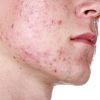As the winter season approaches, the change in weather can bring about a significant shift in our skin’s needs and behavior. The drop in humidity and harsh winds can often lead to skin that is drier, more sensitive, and in need of extra care. Transitioning your skincare routine for winter doesn’t have to be a complex process. Here are some straightforward steps to help you adapt your skincare to the colder months.
Understanding Winter Skin Changes
First, it’s important to understand why our skin reacts the way it does in winter. The cold air outside and the dry heat indoors can strip moisture from the skin, leading to dryness, flakiness, and sometimes even cracking. This makes it crucial to focus on hydration and protection.
Gentle Cleansing
Start by reevaluating your cleansing routine. Winter calls for a gentle cleanser that doesn’t strip your skin of its natural oils. Cream or oil-based cleansers are typically a good choice as they help to maintain the skin’s natural barrier. Avoid using hot water for cleansing as it can further dry out the skin.
Moisturizing is Key
One of the most critical steps in your winter skincare routine is moisturizing. Opt for a richer, more hydrating moisturizer than what you would use in the summer. Ingredients like hyaluronic acid, glycerin, and ceramides are excellent for trapping moisture in the skin. Apply your moisturizer immediately after washing your face to lock in hydration.
Don’t Forget Sunscreen
It’s a common misconception that sunscreen is only necessary during the summer. Winter sun combined with snow glare can still damage your skin. Continue using a broad-spectrum sunscreen with at least SPF 30.
Exfoliation with Care
While exfoliation is important for removing dead skin cells, it should be done cautiously in the winter. Over-exfoliating can strip the skin of essential oils, leading to increased dryness and irritation. Limit exfoliation to once a week and use a mild exfoliator.
Pay Attention to Sensitive Areas
Certain areas of your face, like the lips and the area around your eyes, are more prone to dryness. Use a hydrating lip balm and an eye cream to provide these areas with extra nourishment.
Humidify Your Environment
Consider using a humidifier in your home to add moisture to the dry winter air. This can help prevent your skin from drying out, especially while you sleep.
Stay Hydrated
Lastly, internal hydration is just as important. Drinking plenty of water helps maintain your skin’s moisture balance. While it’s tempting to indulge in hot drinks like coffee and tea, remember they can be dehydrating. Balance these with water intake.
Consult a Professional
If you’re unsure about what products are best for your skin type, or if you have specific skin concerns, it might be beneficial to consult with a dermatologist. For example, you may decide to treat aging or skin conditions with a procedure like Botox. If so, you’ll want to select a skilled doctor with training to inject Botox, such as you can find in New York City or other cities.
In conclusion, the transition to winter skincare is all about enhancing moisture, protection, and gentleness. By following these simple steps, you can help ensure your skin remains healthy, hydrated, and comfortable throughout the colder months. Remember, every skin type is different, so it’s important to listen to your skin and adjust your routine as necessary.







